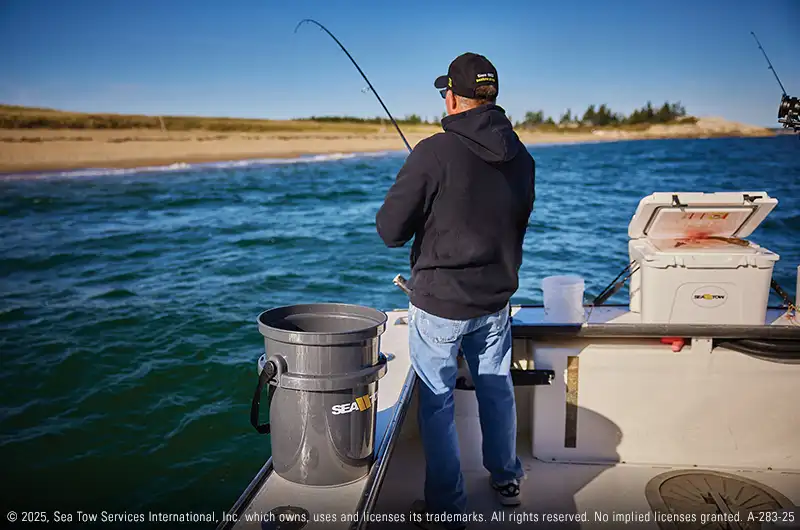
It’s long been said, time and tide wait for nobody. Perhaps the same holds true with fish. Just as those quick to seize opportunities often find success, fish capitalize on every edge they uncover in order to eat, thrive and stay alive.
Understanding how daily tide cycles create fishing opportunities helps beginner and intermediate anglers improve their chances of success. It’s a key way to be in the right place at the right time when targeting saltwater fish. Even “sharpies” at the fishing game must rethink tide strategies as storms can reshape the bottom or fish move due to climate shifts. Fishing pressure and algae blooms may also push fish to seek clearer, oxygen-rich water away from usual spots.
As a general rule:
Most gamefish and inshore bottom species tend to favor incoming water (flood tides) in hot weather. This is especially true in warm bays where the flood tide brings in cooler, oxygen-rich water from the ocean or gulf. That incoming water is often several degrees cooler than the shallow areas that have been heating up for hours.
Incoming tides can raise water levels by six inches to a few feet in back bays and shallow flats.
This opens more habitat for stripers, snook, tarpon, and bonefish – boosting chances of a hook-up in expanded areas.
The opposite can also be true. In cool weather, ebbing tides can be surprisingly productive. Warmer water is pulled from the shallows and flats, often accompanied by schools of baitfish caught in the current around inlets, passes, outflows or pinch points like bridge crossings. Additionally, to the warming water putting predators in a feisty mood, the helpless baitfish serve as a natural chum slick to spark the action.
It’s important to realize, too, that current strength varies throughout each tidal stage. For fishing purposes, the first and last two hours of each tide, when the current moves at a slow to moderate clip, are usually more productive than the stronger mid-tide stages that can be ferocious.
By tracking these factors, you’ll see more success by timing your trips with ideal tides and sunlight angles.
Low sun on the horizon often beats high noon when it comes to productive fishing conditions. In hot weather, catch the first two hours of the flood when it aligns with the first two hours after sunrise or the last two hours before sunset. Doing so multiplies your advantage because most fish species prefer to feed while the sun is low on the horizon.
In cool weather, ebbing tides can be productive as warmer water drains from shallows and flats into deeper areas. This flow often carries baitfish through inlets, passes, or pinch points like bridge crossings, attracting predatory fish.
Even the end of the ebb, when the water is near its lowest point, presents worthwhile opportunities if you know where to look. In rivers, tidal creeks and shallow bays that hold redfish, sea trout or white perch, a dropping tide can ball your targets up in a few select divots on the bottom. With quiet scouting and long casts, you can target fish holding in small troughs. These fish often stay put, preferring the safety of three to four feet of water overhead during low tide.
how do tides affect different areas of your fishing grounds?
This understanding can help anglers navigate less than ideal conditions. Are you seeing cloudy, stained or murky water from heavy winds, storm run-off and algae blooms? Let the tide run through a few cycles can help clear things up; skip today and fish tomorrow afternoon after the bay has had time to flush itself clean.
Slack tide, meanwhile, has a rap for producing lackluster results. Bunker-sized bottom feeders do seem prone to nosh when the current comes to a standstill. It’s hard to say why, but seems they sometimes find it advantageous to feed when they don’t have to fight strong tidal currents. In some cases, it might also be the result of larger fish avoiding the aggressive competition from younger fish slicing through the bait schools as they dart in and out of the current.
Record Setting catch
Charlie Nappi set the international Game Fish Association (IGFA) world record for summer flounder in 1975 with a 22 lb 7 oz doormat in Montauk, NY. He believes the stronger currents actually make it tougher for the biggest fish to feed.
“The big ones get beat out by smaller, quicker fish when it comes to catching the most obvious prey,” he explained. “I think a lot of big fish get lazy and just eat one or two big meals a day rather than snack.” Nappi theorized that for fish that grow less hydrodynamic as they age, like fluke, blackfish and grouper, a relative lack of tide might make feeding less strenuous and more efficient.
Nappi claimed roughly 90-percent of his doormat fluke, of which he caught many, came at slack water. He learned to specifically focus on them with big baits during that tidal stage and has always had amazing success.
“Slack water was the key for most of my big fish,” Nappi shared. “It’s when the big ones eat, too.”
Consider that a reminder that there are exceptions to most rules – even those governing the tides. That’s one reason expert anglers are always looking to experiment – or even buck the trends.
